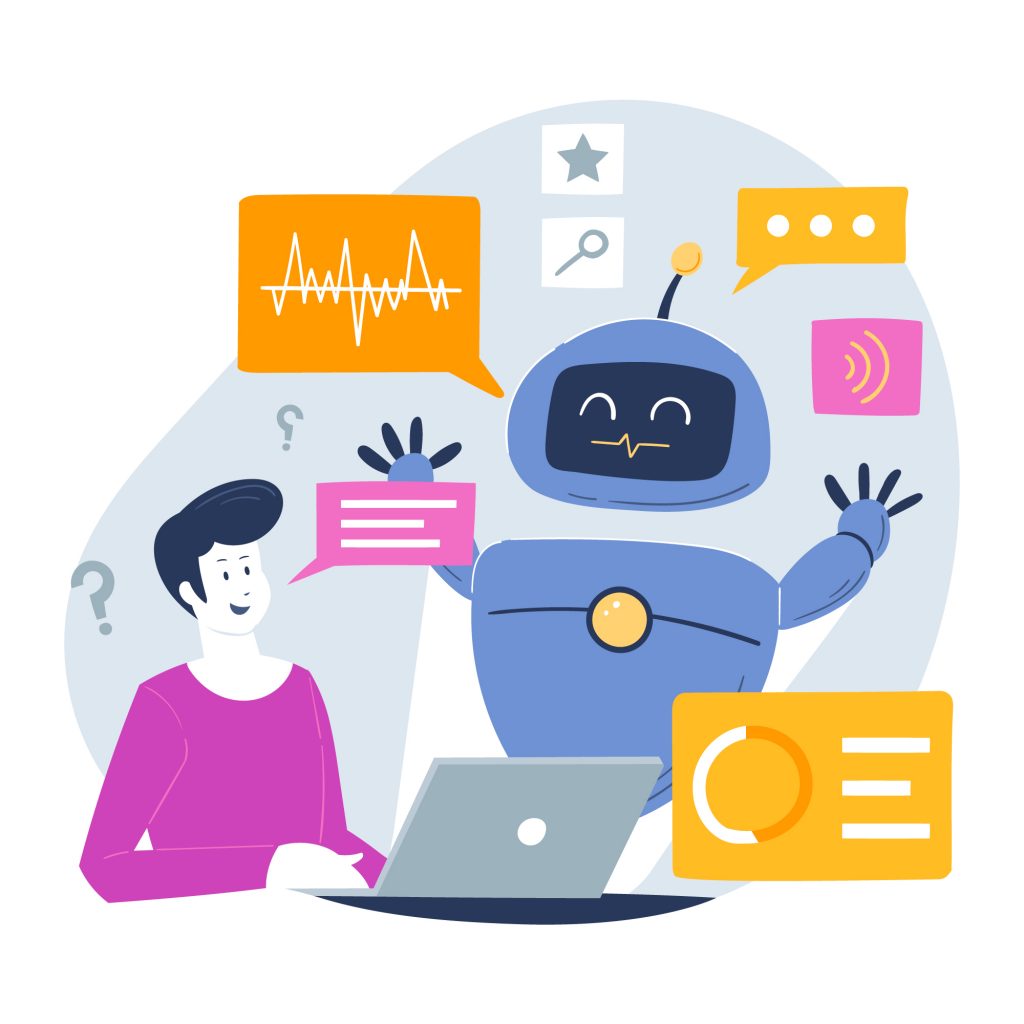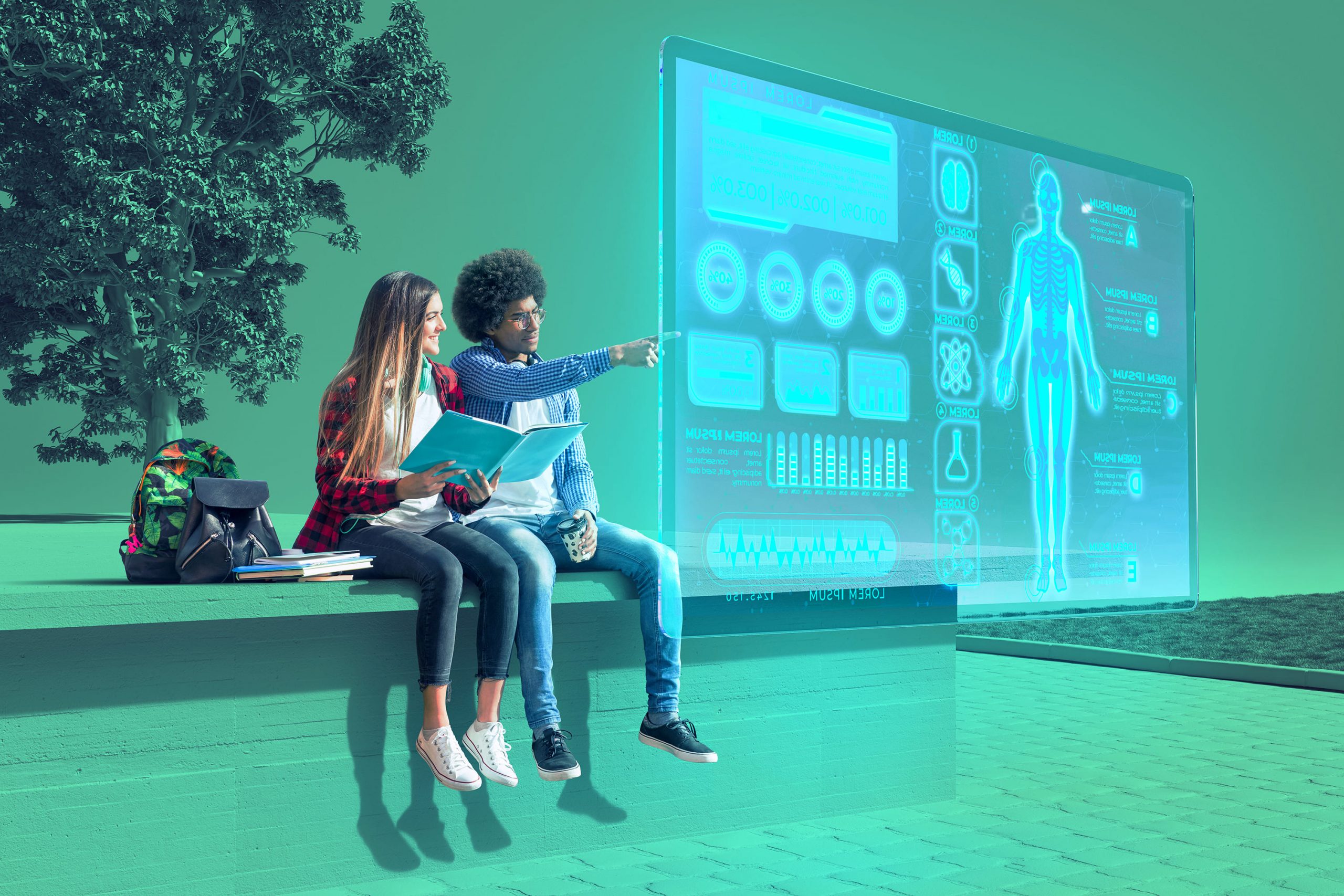The dusty scent of aged paper, the familiar weight in hand, the rhythmic crinkling of turning pages—for generations, textbooks reigned supreme as the gateway to knowledge. But just as ink once replaced the quill, a new era is unfolding in education, powered by the silicon symphony of digital technology. This metamorphosis, from static textbooks to dynamic online resources and, most recently, AI-powered learning assistants, is reshaping the very landscape of learning.
- The Ink-Stained Past: a Farewell to Static Learning
- The Rise of the Machines: AI Enters the Classroom
- Beyond the Hype: Unveiling the Potential of AI in Education
- The Elephant in the Room: Addressing Challenges and Concerns
- The Human Touch: Collaboration, not Competition
- A Glimpse into the Future: Where AI Takes Us Next
The Ink-Stained Past: a Farewell to Static Learning
For centuries, textbooks held an unchallenged position as the cornerstone of education. Their structured approach, portability, and ability to function offline provided stability and accessibility.
Yet, inherent limitations became apparent over time. They were inflexible, struggling to adapt to individual learning styles or keep pace with the ever-evolving knowledge landscape. Static information within their pages often felt outdated, failing to ignite the spark of curiosity in a generation increasingly accustomed to instant updates and interactive experiences.
Then came the digital revolution, bursting onto the scene with a kaleidoscope of online resources. Videos, articles, simulations, interactive platforms, and reading apps exploded onto the scene, offering a dynamic and engaging alternative.
The information overload was undeniable, curation became a necessary skill, and the digital divide emerged as a crucial concern. Still, the potential was undeniable. Accessibility soared, knowledge became instantly searchable, and personalized learning paths emerged.
Static pages morphed into interactive environments, igniting new possibilities for deeper understanding and fostering a love for exploration. In 2022, over 60% of college students used at least one online course, highlighting the shift toward digital resources. This transition represents a shift from static pages to dynamic learning environments, unlocking deeper understanding and a love for exploration.
The Rise of the Machines: AI Enters the Classroom
Remember the textbook jungle, collecting dust on classroom shelves? Now, imagine learning that bends to your unique needs and pace, powered by the magic of artificial intelligence (AI). Forget about robots replacing teachers—AI-powered learning assistants are more like intelligent algorithms personalized for you.
Think instantly answers questions from chatbots, virtual tutors who adapt to your strengths and weaknesses, and learning platforms that curate content specifically for you. These aren’t just futuristic dreams—online education platforms like Duolingo, Khan Academy, and Carnegie.
Learning is making it a reality today. A World Economic Forum study found that 72% of educators believe AI will personalize student learning, underlining its growing influence.
Imagine these assistants analyzing your performance, pinpointing areas for improvement, and suggesting relevant resources, all while offering real-time feedback and support. This shift from static textbooks to dynamic AI-powered learning unlocks the door to a more engaging and effective education for everyone.
For institutions and learners seeking flexible, AI-powered learning experiences, choosing the best cloud based LMS is key. These platforms provide seamless access to resources and allow for adaptive, data-driven learning support that aligns with each user’s pace and style.
And with the diverse options available among the best cloud based LMS platforms, finding the perfect AI-powered learning companion for your needs is easier than ever. From real-time analytics to personalized feedback, the right LMS enhances both student engagement and overall educational outcomes, making learning more interactive and tailored than ever before.
Beyond the Hype: Unveiling the Potential of AI in Education
The hype surrounding AI is undeniable, but what are the concrete benefits for students?
Personalization sits at the heart of this transformation. Imagine an AI assistant that identifies your preferred learning style, visual, auditory, or kinesthetic, and then curates a learning path that caters to it.
Imagine real-time feedback that adapts to your understanding, pushing you further when you excel and providing targeted support when needed. Case studies showcasing improved exam scores and increased engagement paint a promising picture of AI’s impact.
But personalization goes beyond just content. AI can ignite engagement and motivation through gamification, interactive elements, and dynamic feedback. Picture yourself immersed in a virtual science lab, conducting experiments and receiving feedback tailored to your actions.
Imagine AI-powered simulations immersing you in historical events, sparking critical thinking and a deeper understanding of the past. These are not distant dreams but glimpses into the potential of AI to transform learning from a passive activity into an active, engaging adventure.
In 2023, a study by Intelligent.com found that most students have fully substituted traditional tutoring with AI, reporting an average 95% improvement in grades, particularly in math and science. This demonstrates the potential of AI to personalize learning and boost academic achievement.
The Elephant in the Room: Addressing Challenges and Concerns
AI in education promises personalized learning and exciting possibilities, but addressing two key challenges is crucial: ensuring equal access and mitigating algorithmic bias.
Bridging the digital divide is paramount. Not all students have equal access to technology or digital literacy skills. Strategies like affordable devices, accessible platforms, and digital literacy programs can help level the playing field and ensure inclusion.
Bias in AI algorithms is another concern. These algorithms can reflect the biases in the data they’re trained on, potentially disadvantaging certain groups. Human oversight, diverse datasets, and responsible development practices are essential to combat this potential AI risk.
A recent Algorithmic Justice League study found that 70% of facial recognition systems in schools exhibit racial bias, highlighting the need for careful implementation to avoid discrimination.
By acknowledging and addressing these challenges, we can ensure that AI in education empowers all learners, not just a select few. Building ethical and responsible AI is key to fostering a truly inclusive and equitable learning environment.
The Human Touch: Collaboration, not Competition
While AI in education might grab headlines, it’s crucial to remember that teachers remain irreplaceable. Their emotional intelligence, ability to foster social learning, and the unique human connection they offer are invaluable. So, instead of fearing AI as a replacement, imagine it as a powerful tool in the teacher’s toolbox.
Picture teachers using AI assistants to personalize lessons, freeing up precious time for individual attention. This newfound flexibility allows them to provide emotional support, guide students through complex topics, and cater to diverse learning styles.
A 2022 University of Southern California study supports this vision, finding that teachers who utilized AI-powered tutors reported spending 30% more time on personalized instruction. This underscores the key point: AI empowers teachers, not replaces them.
This collaborative approach, where technology enhances, not diminishes, the human connection, is the true future of education. By leveraging the strengths of both educators and AI, we can create a supportive learning environment where every student thrives.
A Glimpse into the Future: Where AI Takes Us Next
 AI acts as a powerful tool, not a replacement for educators. The human connection, emotional intelligence, and social learning fostered by teachers remain irreplaceable.
AI acts as a powerful tool, not a replacement for educators. The human connection, emotional intelligence, and social learning fostered by teachers remain irreplaceable.
Imagine teachers using AI assistants to personalize learning, freeing up time to focus on individual needs, providing emotional support, and guiding students through complex topics. This collaboration leverages the strengths of both, ensuring a well-rounded and supportive learning environment.
A recent McKinsey & Company study suggests that technology can free up 20-30% of teachers’ time, allowing them to focus on activities that directly benefit student learning. This is significant because it highlights the potential of technology to shift the teacher’s role from primarily content delivery to fostering deeper engagement, personalized support, and critical thinking skills in students.
Conclusion: Embracing the AI Revolution in Education
This journey from dusty textbooks to AI-powered learning assistants is not merely a technological shift but a philosophical transformation. It’s about embracing personalized learning, fostering a love for exploration, and empowering individuals to participate actively in their education.
However, with this transformation comes great responsibility. We must prioritize student well-being, ensure responsible data use and privacy, and engage in open dialogue about ethical AI development. By harnessing the power of AI while safeguarding its potential pitfalls, we can create a future where education is no longer a one-size-fits-all endeavor but a personalized journey that unlocks the potential within every learner.



It’s going to be end of mine day, however before ending I am reading this great article to improve my know-how.